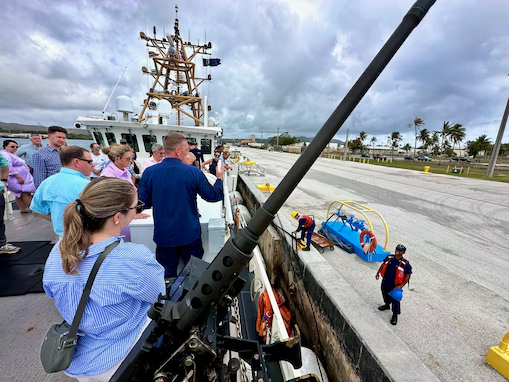China has become one of the largest bilateral infrastructure lenders to the Philippines, but its finance commitments swing wildly with the two countries’ fickle political relationship, a new report said, warning that lenders could shift focus as Beijing and Manila spar in the South China Sea. China committed a total of $9.1bn in state-directed finance to the Philippines between 2000 and 2022, according to an investigation published on Wednesday by AidData, a research lab at William & Mary university. The findings illustrate the special role that China’s financial power plays in south-east Asia even as the region’s governments try to balance economic dependence on their large neighbour with their political and security interests. Successive governments in the Philippines, one of the oldest Asian allies of the US, have swung between Beijing and Washington. “Beijing bankrolled the [Gloria Macapagal] Arroyo and [Rodrigo] Duterte administrations’ priorities with gusto, while frosty relations with . . . [Benigno] Aquino damped collaboration,” AidData added, referring to the country’s presidents between 2000 and 2022. Arroyo pursued close ties with China, seeking loans and investment to support growth. Under her presidency, from 2001 to 2010, Chinese development finance in the Philippines increased from $88mn to $931mn, according to AidData. But as bilateral ties soured under Aquino, Manila received less money from Beijing over his six-year tenure than it had from just one infrastructure project in Arroyo’s final year in office. But then, Duterte’s move to cosy up to Beijing again after becoming president in 2016 led to a sharp reversal. More than two-thirds of the Chinese development funds that flowed to the Philippines in the entire 20-year period were received under his six-year tenure, the researchers found. Samantha Custer, lead author of the report, said China was likely to drastically reduce lending for big-ticket infrastructure projects in the Philippines now as China’s assertive moves in the contested South China Sea have triggered soaring tensions in ties with the Philippines. At the IISS Shangri-La Dialogue security conference in Singapore last weekend, Philippine President Ferdinand Marcos Jr and China’s defence minister Dong Jun clashed, with Marcos warning that he would view the death of any Filipino resulting from a wilful act by China’s coast guard as close to an act of war, and Dong responding that “our patience has limits” with regard to the dispute. “What we see right now is similar to what happened under Aquino,” Custer said. “As Marcos is so vocal and China flexes its muscle in the South China Sea, I don’t think China is going to stop all development finance, but the flavour is going to change. When relations are acrimonious, we see more private than public partners, regions outside the capital and courting of the political opposition.” In line with China’s development finance profile globally, more than 90 per cent of the state-directed finance it gives to the Philippines is not aid — defined as grants or interest-free loans — but loans with conditions close to market rates. That makes it the largest bilateral lender, but means its overall development finance contributions are much smaller than those from Japan and the US.
China emerges as one of biggest bilateral lenders to Philippines





